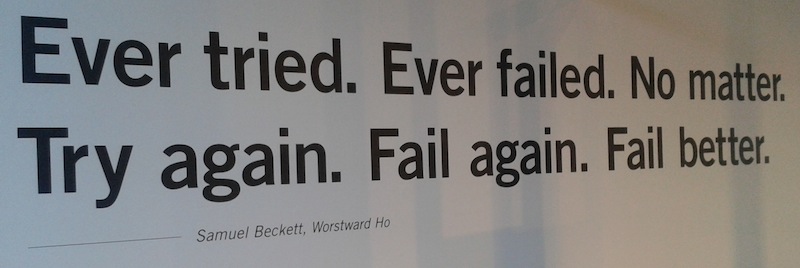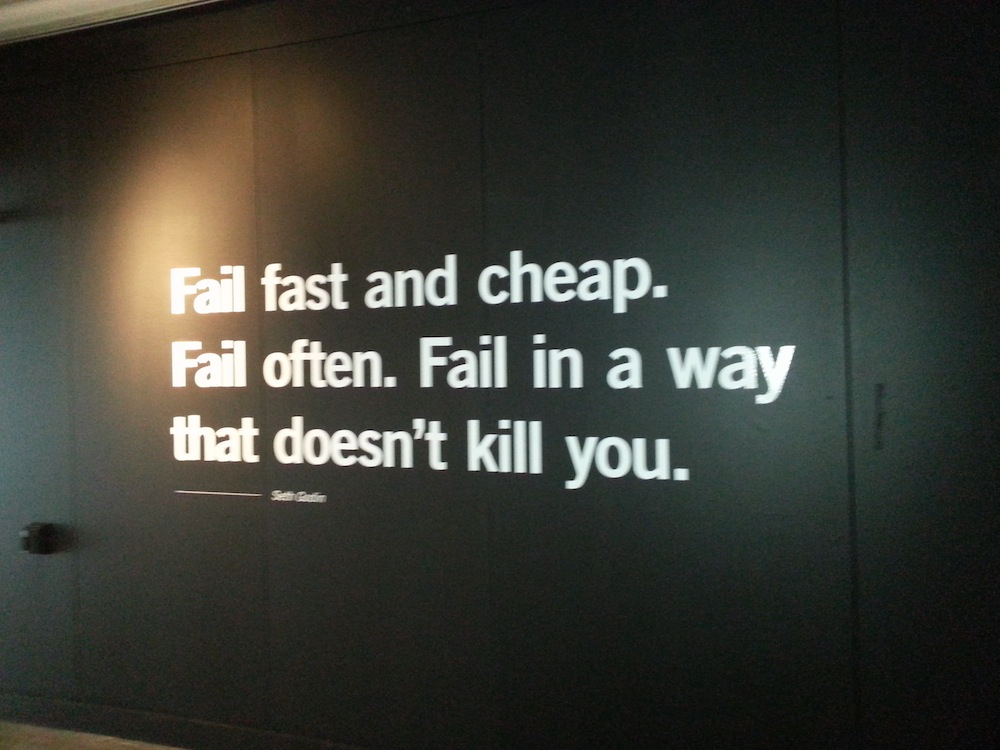Rachel Lavin | Contributing Writer
Entering the Science Gallery’s Fail Better exhibit on the opening night you are handed a lemon and while you spend most of the exhibition carrying it around with a slightly perplexed look on your face, by the end of the exhibition all is revealed. They take your lemon and turn it into a glass of lemonade.
They take your lemon and turn it into a glass of lemonade.
It is touches like this that make the Science Gallery such a uniquely stimulating experience and their latest exhibition Fail Better is no exception.
The exhibition is centred around exploring failure as a theme, something surprisingly refreshing in the hyper-competitive environment of Trinity. The exhibition chronicles the failures of iconic individuals such as Samuel Beckett, Sonia O’Sullivan and Christopher Reeve.

The curator of Fail Better Jane Ní Dhulchaointigh explains that “the idea is to explore the idea of failure and particularly its role in innovation and creativity.”
‘Fail early. Fail fast. Fail often’
Rather than portraying failure negatively, as we are so accustomed to do, the Fail Better exhibition takes a more open-minded approach. Introducing the exhibition, the first sign reads: “It is frequently suggested that rather than bury our failures we should wear them as a badge of honour.
‘Ever tried. Ever failed. No matter. Try Again. Fail again. Fail better.’”
In Silicon Valley, entrepreneurs who have notched up less than three major failures are viewed with suspicion. ‘Fail early. Fail fast. Fail often’ is a common phrase in the start-up community, in a new twist on Samuel Beckett’s ‘Ever tried. Ever failed. No matter. Try Again. Fail again. Fail better.’”
Each exhibition contains an item that symbolizes or was indeed an active ingredient in somebody’s failure, as explained by famous figures, of science, medicine, sport and the arts, and each is more intriguing than the next.

Some of the highlights are Christopher Reeve’s wheelchair, Samuel Beckett’s original manuscript drafts of Westward Ho, and most intriguingly, a human birthing machine that earned itself an Ig Nobel Prize. The machine has been rebuilt for viewing and is available to stare at in utter disbelief at in the exhibition. It was originally intended to help women deliver babies through centrifugal force. For all you non-physics students, this basically involved strapping the woman to a bed and spinning her until the baby popped out, into a somewhat inadequate net that resembles a small goal. This is a must-see for the sheer ludicrous nature of its invention.
‘the message is that failure can lead to all kinds of interesting things’
As Ní Dhulchaointigh explains ‘the message is that failure can lead to all kinds of interesting things’, and there is certainly no shortage of those at this exhibition. So, if in the coming weeks of exam preparation the fear consumes you, take a study break and visit the ‘Fail Better’ exhibition. You might just end up reminding yourself that, far from being the worst thing that ever happens to you, failure can sometimes be the best.
Above all, this exhibition teaches us that failure is not to be feared.
Admission is free to the Science Gallery and it is open to the public from Tuesday – Friday 12:00 to 20:00 and Saturday & Sunday 12:00 to 18:00.







